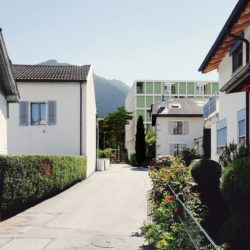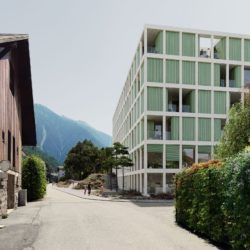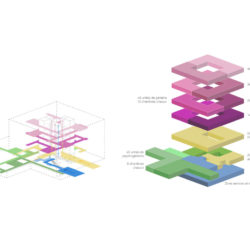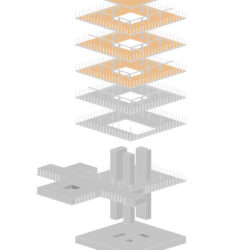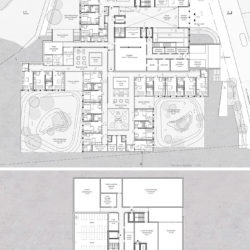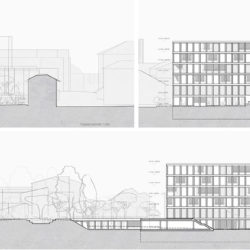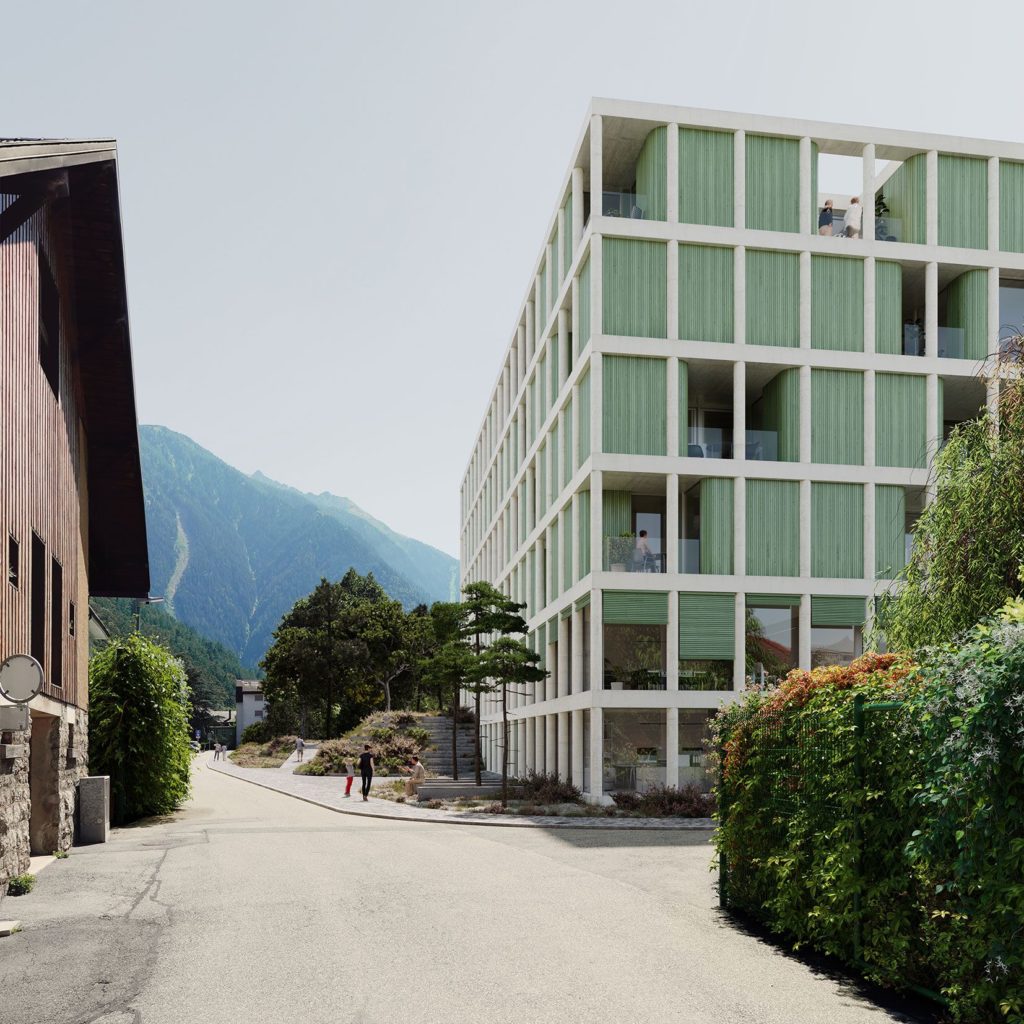
DF_DC . renders: © Ethan de clerk
The project deals with the question of dwelling for the elderly, away from the common misconceived references of either hotel or hospital, and instead imagined as a big home.
Situated in a large plot, surrounded by scattered low-density housing and the existing elderly home – to be replaced by the new– the project proposes a public park in addition to the main building as mutually indivisible components. The building massing is kept compact on the north-eastern corner, marking the boundary, while negotiating the change in level of the raised park and consolidating as much open space as possible. Access and the distribution of the different circulations take benefit from this condition (two ground floors), with the public and communal spaces linking directly with the different instances of the exterior.
Internally, a central atrium connects all the floors with a shifting configuration, resulting from the rotation and mirroring of a typical floorplate on the top four storeys where the rooms and meeting spaces are contained. These plans, through their continuous variation, avoid an institutional feeling of stacking and repetition, while remaining modular and thus, of economical construction. The importance given to the communal life on these floors results in an inversion of the traditional position of the bathroom as a threshold between the entrance and the bedroom, thus preferring a stronger link between hallways (“streets”) and bedrooms through internal shuttered windows, and linking instead the bathrooms to the private open spaces along the facades (“gardens”).
1 person = room
10 people = unit
100 people = community
The park, despite being public, is conceived as an extension of the programme of the home. In its patchwork different elements are juxtaposed: allotments, sensory garden, playgrounds and a big lawn, also containing the parking. The lower ground floor extends underneath the park and contains the protected areas, opening to two landscaped courtyards, allowing the residents under special care to go out without the conventional elements of protected enclosure.
Materially, the building is made of a pre-cast concrete frame and timber partition/cladding, with composite slabs. The floors are finished in lacquered raw earth and the platforms revolving around the atrium as timber slabs, acknowledging their contingent role. The exoskeleton of round columns is clearly read against the painted timber cladding of the rooms and the sequence of gardens, a different arrangement on each façade.
_
Project: Elderly House “Castel Notre-Dame” – Martigny (CH)
Status: Competition proposal
Architect: DF_DC / Dario Franchini, Diego Calderon
Landscape Architect: Thierry Dalcant
Structural Engineer: WMM Ingenieure
3D images: Ethan de clerk

